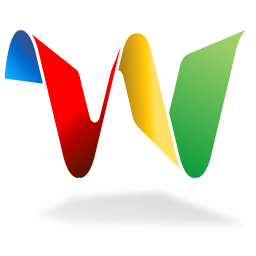 Over the past month, Google has been letting the first wave (pun intended) of users access it's new web collaboration platform, Google Wave. The blogosphere has been thick with reviews, impressions, raves and rants. As someone involved in the early developer preview, I've watched Wave evolve from a fairly shaky alpha without core features, to the fairly robust platform it is now. The big question among everyone using the earlier preview was how it would (or could) be used. It almost seemed like a solution looking for problems.
Over the past month, Google has been letting the first wave (pun intended) of users access it's new web collaboration platform, Google Wave. The blogosphere has been thick with reviews, impressions, raves and rants. As someone involved in the early developer preview, I've watched Wave evolve from a fairly shaky alpha without core features, to the fairly robust platform it is now. The big question among everyone using the earlier preview was how it would (or could) be used. It almost seemed like a solution looking for problems.
There's no shortage of problems with the current state of collaborative web technology that are looking for solutions. Let's take a very quick look at the current widely used options:
Email let's people communicate asynchronously. Services like GMail raise the bar and make email almost instantaneous. But everyone has copies of the same messages and attachments in their inboxes, and many have different versions as they were added or dropped off the thread at various stages. Replies to all, carbon copies, it gets messy fast. I'm a fan of 1-1 email for formal messaging. After that, it breaks.
Newsgroups and forums solved the problem of everyone having copies of the same message, and they help people follow along on a central message store. But all the other failings of email remain. Information gets lost in threads, messy inline responses and commentary are hard to follow and are inconsistently formatted.
Wikis came along and were hailed as a solution. Wikis stop the nightmare of threads and copies and allow everyone to work on the same body of knowledge. But wikis share a key problem with forums: they're silos of information. They're not a standard communication platform that everybody uses and relies on every day. Wikis are individual sites, and so are forums, usually with their own registration system and conventions. For this reason, they are not the widespread "everybody is on it" web collaboration solution.
In many ways, Wave is a best of breed web collaboration tool:
Although Wave offers a compelling new solution, it does not replace any of these technologies. It simply provides a better alternative to certain uses of each. Some of these are flaws that developers will likely smooth over with time and additional feedback. Most are just problems Wave was not designed to solve.
Email will still be around because it's THE web collaboration standard. For formal business communications, email provides a nice clean way to send the electronic version of a letter or memo. Email won't start to go away until everybody is using Wave. And you'll very soon start to see email-to-Wave gateways allowing users to use Wave clients to communicate with email die-hards.
Forums still provide the best solution for a silo of information requiring ephemeral messaging between a group of people around a common topic. Wave will not work well for this for the same reason email doesn't - it doesn't provide the topical home that a forum does. There are also privacy issues, discussed below.
Instant messaging uses the same back-end technology as Wave, and, like email, we'll likely see Wave clients support conversations with users on traditional instant messaging networks. Pure instant messaging is still a nice lightweight alternative to Wave, which adds a substantial amount of overhead with it's versioning, concurrent editing and instant updating.
Wikis will still provide the best option for larger bodies of information that require collaborative input. For example, wikis have become a great tool for developing documentation; you're not likely to see that being done with Wave. And community wikis will still provide a topic-based central approach to web collaboration that provides a privacy buffer.
Wave is similar to email in two key areas that will ultimately drive how it is used.
From a privacy stand-point, collaborating in Wave is much like collaborating in email. You're essentially giving your wave address (think email address) to everyone you're Waving with. So forums and wiki sites will still provide buffered collaboration spaces for larger communities to work together without exposing personal contact information.
And from a content stand-point, Wave works with messages like email. At least at this stage, Wave messages don't get linked together like pages in a wiki but are organized into folders or categories by a wave client and are available via search - just like email. Working with any body of content that doesn't fit into a single message will be unwieldy in Wave. Wikis will still be the best tool for managing larger, complex documents that require many interlinked pages.
So what, then, is the killer app for Wave? What problem does it absolutely nail? Google's hour long I/O demo video pretty much lays it out. Developers and pundits have dreamed up all sorts of fantastic Wave-based solutions to the worlds problems, but in my view, there are two killer apps for Wave:
The future of Wave is incredibly bright. Its usefulness will be fairly weak until there's a critical mass using it every day. But when that happens, it really will be next era of web collaboration.